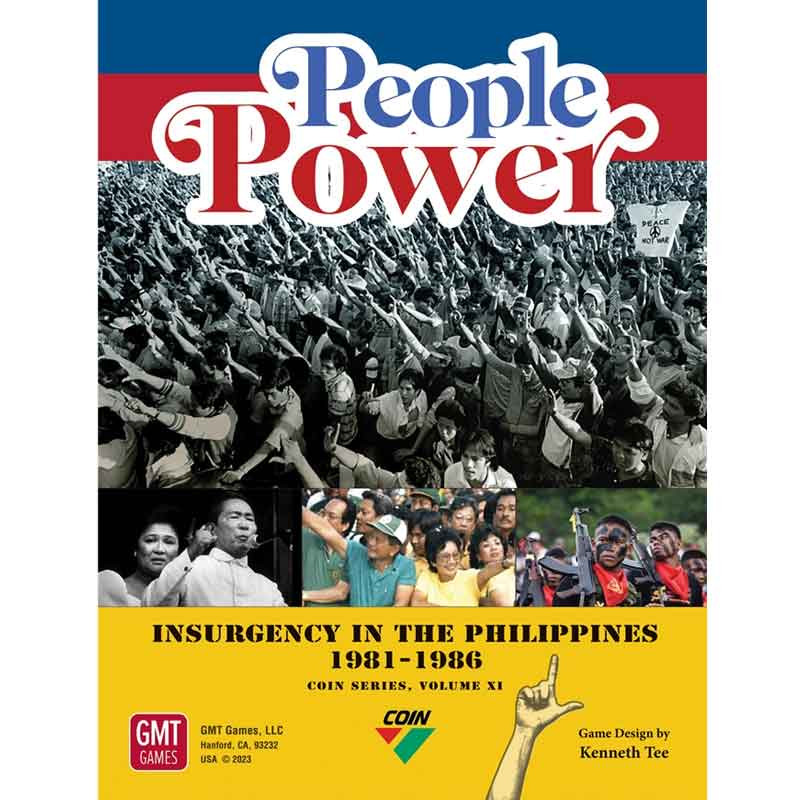- -10%




You could say that the story of "People Power" in the Philippines began with the arrival of one airplane in Manila and ended with the departure of another. On August 21, 1983, exiled opposition leader Benigno Aquino Jr. returned from the United States to his homeland. He anticipated being arrested, but as his plane approached Manila, he also contemplated the possibility that he might not survive the homecoming. Tragically, moments after disembarking, he was shot dead by a conspirator on the airport tarmac.
Last items in stock
 Game description
Game descriptionYou could say that the story of "People Power" in the Philippines began with the arrival of one airplane in Manila and ended with the departure of another. On August 21, 1983, exiled opposition leader Benigno Aquino Jr. returned from the United States to his homeland. He anticipated being arrested, but as his plane approached Manila, he also contemplated the possibility that he might not survive the homecoming. Tragically, moments after disembarking, he was shot dead by a conspirator on the airport tarmac.
This event would inspire and mobilize the opposition against the Marcos regime, setting in motion a series of events that would culminate in the departure of Ferdinand and Imelda Marcos three years later, after more than two decades of autocratic rule. This is a story of greed and corruption at the highest levels of government, of a dictator ruling with an iron fist, and of a grassroots opposition that stood up, rebelled, and ultimately forced him out of power in disgrace. It was a revolution that demonstrated the immense power of a united and determined group of individuals. Just a few years before the fall of the Iron Curtain in Germany, Filipino patriots showed the world the power of a united people in toppling a tyrant. At its core, this is the story of "People Power."
People Power: Insurgency in the Philippines, 1983-1986 is the eleventh volume of the highly acclaimed COIN Series originally designed by Volko Ruhnke. People Power features three distinct factions, instead of the usual four:
1. The Government faction, represented by Ferdinand Marcos, Imelda Marcos, their political cronies, and military forces.
2. The NPA (New People's Army), inspired by successful Marxist revolutions in China, Cuba, and Nicaragua. They aimed for a national uprising, seeking support from both the urban and rural populace, with the goal of replacing the Marcos government with their own form of autonomy.
3. The non-violent Reformers faction, led by Corazon Aquino (Benigno Aquino Jr.'s widow) and her allies. In the face of tragedy, they revived a platform of social justice and unwavering momentum that would profoundly transform the political landscape of the Philippines.
For newcomers to the COIN Series or those looking to introduce the series to their friends, People Power serves as an excellent introductory game. With a playtime of approximately two hours and accessible complexity, People Power employs many of the core mechanics of the COIN Series in innovative and familiar ways. The 22" x 17" map simplifies the introduction to the game, featuring only two types of terrain: Cities and Countrysides (which combine the rural settings of the island nation with lightly-habitable jungles and mountains). However, don't be fooled by the fast-paced gameplay and basic systems—there are still plenty of strategic puzzles and opportunities for inter-player deception. Additionally, People Power introduces a new feature to the COIN Series: a Key Personality mini-hand mechanism that represents the effectiveness of various generals and power brokers, adding a new dimension to player actions and decisions.
As with most games in the COIN Series, People Power immerses players in an unfolding narrative that pits insurgent forces against a government seeking to defeat them, while a third party endeavors to thwart both sides. For veterans of the COIN Series, here's a brief overview of how People Power presents the dynamics between the factions:
- NPA Victory is achieved by amassing NPA Bases and Resistance instead of Support or Opposition. Their Operations and Special Activities reflect the strategies of Cold War-era revolutionary movements, tailored to their domestic objectives.
- The Government faction utilizes Support and Control to distribute patronage among cronies and the Marcos family. Their Operations and Special
 Reviews
Reviews
@CUSTOMER_NAME@
@AUTHOR_PROFILE@ @COMMENT_ISO_COUNTRY@ @VERIFY_PURCHASE@@COMMENT_TITLE@
@COMMENT_COMMENT@